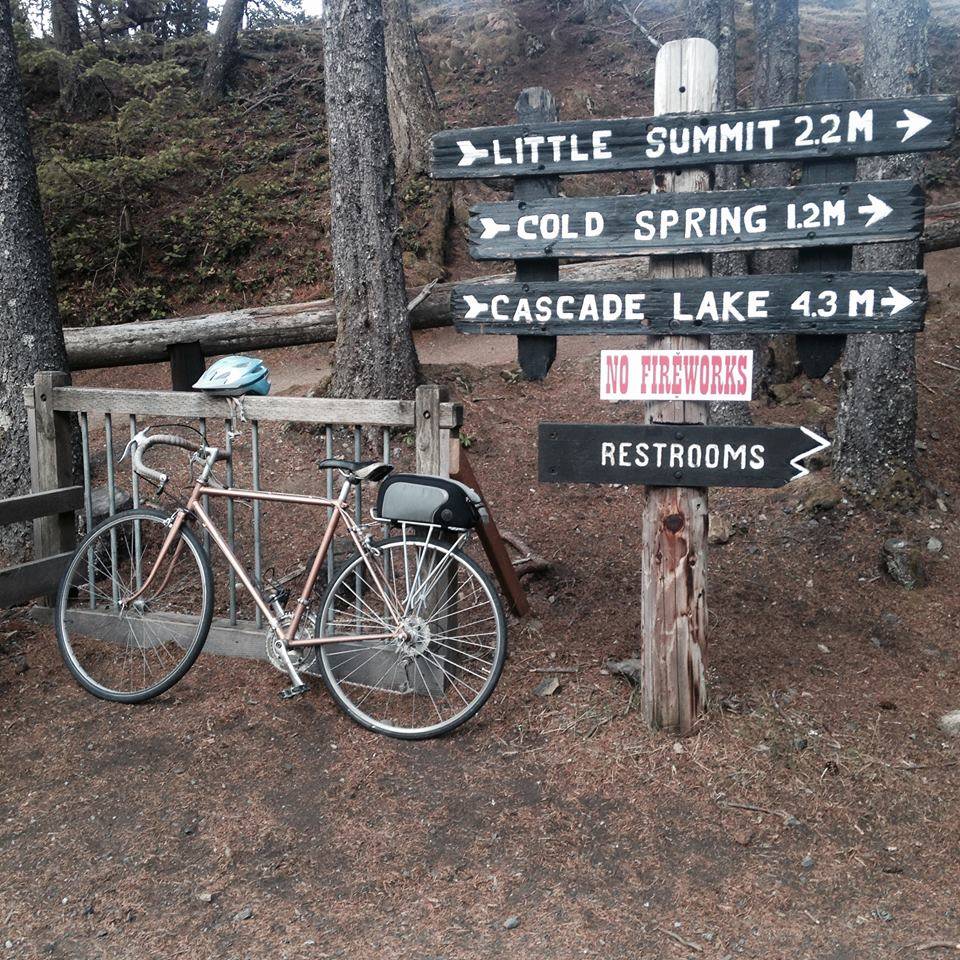Every summer, island drivers are obliged to share the road with thousands of bicyclists.
San Juan County Sheriff Ron Krebs would like to remind the community that although accidents are rare occurrences, it’s still important to be alert and take precautions while driving or biking.
“Bicyclists have just as much right to be on the roadways as the cars do. Yet each year we have reports of aggressive drivers when it comes to cyclists,” he said. “Please slow down and be aware of those on the roadways with you.”
Around 280,000 people ride their bikes on the Washington State Ferries system-wide each year. For the past nine years, Washington has been ranked the number one bicycle friendly state by the League of American Bicyclists. Bikes are legally considered vehicles on the state’s roadways.
In an online survey by San Juan County Parks and Fair Department in March 2016, 54 percent of respondents said creating safe bike routes on county roads is a high priority.
So far in 2018, Orcas Fire and Rescue has not had to respond to an aid call for an injured biker.
“Both bicyclists and drivers need to be aware of each other, be courteous and be safe when interacting with each other,” said Fire Chief Scott Williams. “I have seen bicyclists weave in and out of the road without looking for traffic, and I have seen cars cross the center line to avoid bicyclist on blind turns and hills. We are fortunate we haven’t had a 911 call yet.”
According to the Centers for Disease Control and Prevention, bicycling accounts for only 1 percent of all trips in the United States, but cyclists face a higher risk of crash-related injury and deaths than occupants in motor vehicles. In 2015 in the United States, more than 1,000 bicyclists died and there were almost 467,000 bicycle-related injuries. Adults ages 50 to 59 years have the highest bicycle death rates. The National Highway Traffic Safety Administration lists the following common mistakes.
Bicyclist errors
• Riding out into the street from a driveway, alley or from between parked cars without stopping or looking for traffic. Drivers do not expect bicyclists to enter the road in the middle of a block. The driver has the right-of-way and expects entering traffic to yield. Always look left-right-left before entering a road.
• Turning or swerving suddenly into the path of a motorist. Ride in straight, predictable lines; use a mirror or look over your shoulder for traffic; and use hand signals before changing lane position.
• Riding through a stop sign without stopping. Follow the same rules of the road as motorists. Be prepared to stop quickly.
• Riding against the flow of traffic. Drivers do not expect traffic to come from the wrong direction.
• Riding while impaired, which affects balance, coordination, focus and quick reactions. Remember that a bicycle is a vehicle. If you plan to drink, get a safe ride home.
Driver mistakes
• Turning in front of a bicyclist traveling on the road or at an intersection or driveway. Yield to bicyclists as you would motorists and do not underestimate their speed.
• Failing to search surroundings for other vehicles, including bicycles. These crashes can occur in parking lots, at stop signs, when backing up or when parking on the street. Before accelerating your vehicle, look around for all road users, including bicyclists and pedestrians.
• Overtaking a cyclist but doesn’t see them until it is too late. Factors may include speeding, inattention and alcohol on the part of the driver and poor visibility or alcohol on the part of the bicyclist. Always do visual scans of the roadway for other traffic, especially at night.
• Passing a bicycle too closely. Pass bicyclists as you would any other vehicle — when it’s safe to move over into an adjacent lane.
Tips for success
According to the CDC, the following can help prevent a bike-related injury or death.
• Bicycle helmets reduce the risk of head and brain injuries in the event of a crash. All bicyclists, regardless of age, can help protect themselves by wearing properly fitted bicycle helmets.
• Fluorescent clothing can make bicyclists visible from farther away than regular clothing during the daytime and retro-reflective clothing is more visible at night.
• Active lighting can include front white lights, rear red lights or other lighting on the bicycle or bicyclist. This lighting may improve the visibility of bicyclists. For night bicycle riding, Washington state requires a bike to have a white front light, not a reflector, that is visible for 500 feet, and a red rear reflector. A red rear light may be used in addition to the rear reflector.
For more info visit: www.wsdot.wa.gov/Bike/default.htm; www.visitsanjuans.com/what-to-do/all-san-juan-islands/bicycle-rentals; www.wsdot.wa.gov/ferries/bicycles.



